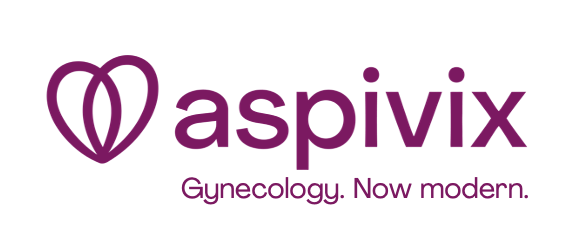
Reshaping gynecology with women’s experience in mind
Aspivix started in 2015 with three co-founders Julien and David Finci, who are brothers, and Mathieu Horras. David is a gynecologist based in Geneva, and Julien and Mathieu worked in the medical device industry. David had issues with an instrument called the tenaculum. They all quickly realized they could use each other’s complementary expertise to create a better tool, and this is how Julien, David, and Mathieu co-created the company Aspivix.
“Entrepreneurship goes with ambition and dreams. We see many opportunities for Aspivix.” explains Mathieu, “anytime we speak with physicians and patients, we learn about unmet needs that deserve to be addressed. The more people we interview with an open-minded mindset, the more ideas we get for future developments at Aspivix.”
Aspivix is a women’s healthcare start-up focused on gynecology. The team focuses on reducing pain caused by procedures that require the cervix to be stabilized because these are very common office-based procedures affecting 90 million women every year. The vision of Aspivix is simple: make gynecology, now modern.
The founders started the company by developing an atraumatic device called “Carevix™” to replace the tenaculum. The cervical tenaculum is a surgical instrument that dates to the 1800s. Today, it is used to grasp and stabilize the cervix during a gynecological procedure.
Multiple issues come along with this device since it has not changed since its creation and was inspired by a device used to remove bullets from bodies. One can only wonder how the gynecological field continues to use such a tool on women despite the incredible technological advances of recent years. The tenaculum is notably used when inserting an IUD as well as in several transcervical procedures.
From the Tenaculum to the Carevix™
The procedure requiring the tenaculum causes mild to severe pain in most patients. Because of the way it looks, physicians do not show this device to patients who are more and more speaking out about the lack of gentleness and procedure transparency. Nowadays, patients want to know what happens during a medical procedure and doctors want to meet this need. According to research from Aspivix, physicians would feel more comfortable showing and using the Carevix™ to their patients as a pilot study already shows improvement in reducing pain and bleeding with this device compared to the tenaculum.
Many factors explain why Aspivix decided to create a new device, but the two main problems are the pain inflicted during the gynecological procedures and the bleeding. This is because the tenaculum can cause bleeding during the process, which can cause much concern for the patients and take time on the doctors’ agendas who must deal with the bleeding.
Ninety million women every year experience pain and bleeding with the cervical tenaculum.
Almost 90% of women report mild to severe pain in gynecological procedures using the cervical tenaculum. 18% of women report fear of pain as the main reason for avoiding the IUD as their contraceptive method.
The Carevix™
Carevix™ is a very elegant device and has been in development for a long time. It looks simple, but it is very complex to develop. The idea was to create a device that would replicate the procedure the way it is today without the pain inflicted on patients and remove barriers for physicians and patients.
“Is there a clinical need for the carevix™? Yes! Aspivix is not simply creating the product because it looks better, but because there is a significant unmet clinical need, globally, and we realized that nobody was working to fill the gap,” declares Andrea, Head of Global Marketing & Sales at Aspivix.
With Carevix™, procedures will be more efficient and shorter as it prevents issues such as bleeding. Moreover, as the tenaculum is used for inserting IUDs, women tend to be afraid of this procedure, known as extremely painful. Offering the right contraception is critical, and pain is a barrier to efficient contraception such as IUD.
Nowadays, across the globe, innovators are reimagining the IUD beyond contraception to address a multitude of conditions that affect women from reproductive age and throughout menopausal years. The uterine cavity is an ideal environment to leverage an IUD to sense, diagnose, or treat such conditions. However, these smart technologies will require transcervical access to be inserted into the uterus, so inevitably Carevix™ will become an enabler for such innovations as it limits and decreases pain for patients. Therefore, Aspivix anticipates that, in the future, a solution like Carevix™ will be key to support smart uterine technologies. The central clinical need that Aspivix wants to address is “how to enable patient friendly transcervical procedures to gain access to uterus? “
Challenges faced by Aspivix
Like most start-ups, one of the most frequent challenges is fundraising, particularly in women’s health. Another challenge is to make sure the product will be adopted, accepted, and distributed. “Making women’s health visible is key to consolidating the environment.” declares Mathieu.
Aspivix is identifying the right partners. After the results from clinical trials are out, which is crucial, they will engage key gynaecologists in selected markets who will gain experience with the device and later will help train other physicians. After clinicians have gained clinical experienced and realised the value of the device, Aspivix will engage the right distribution partners. Launching disruptive medical innovations is a challenge experienced by any medical device company, however the Aspivix’s team is confident that the product has clinical and economic value thus a place in the market.
For more information visit aspivix.com
Share this story:










